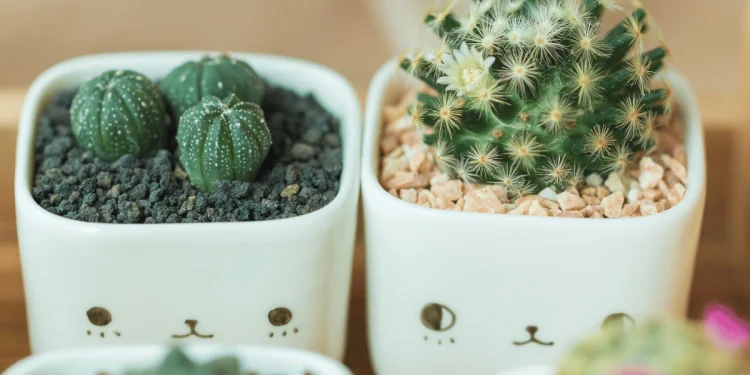Cacti can be small or huge, some can even be eaten. These prickly plants can cover wide expanses of plains and all this without many requirements. They can grow for centuries with just a bit of water every now and then, and that’s it.

But how do all these plants get into one place, right? Do they differ in gender? Or can they reproduce on their own?
As gardeners, we’re often fascinated by the unique characteristics of the plants we grow, and cacti are no exception. They’re not just spiky green blobs – they’re living organisms with complex reproductive systems.
In this article, we’ll explore the question that’s been on the minds of many curious gardeners: Do cacti have genders, and how do they reproduce? And get ready to learn about very technical terms “stamens” and “pistil.”
Do Plants have a Gender?
Let’s take a look at plants in general first. If you ever wondered if plants have genders, the answer is yes and no.
While some plants have clear male and female reproductive structures, others have both or neither.
In plants with separate male and female structures, the male part is called the stamen and produces pollen, while the female part is called the pistil and contains the ovary where the seeds develop.
For instance, Kiwi plants can be either male or female. The male plants produce flowers with pollen, while the female plants produce flowers that develop into the familiar kiwi fruit. Another example is Yucca. What is interesting about Yucca is that these plants have separate male and female flowers on the same plant. Which brings them closer to flowers that have both male and female reproductive parts.
Like corn or squash. Flowers of these two plants have both male and female reproductive structures in the same flower.
And some plants don’t have any reproductive structures at all and rely on spores or other means of propagation. That’s many typical forest plants like ferns, mosses, algae, or fungi.
Do Cacti have Genders?
It’s a common misconception that cacti have either male or female genders. In fact, most cacti are monoecious, meaning they have both male and female reproductive structures in their flowers. This allows them to self-pollinate and reproduce on their own without needing another cactus.
While some cacti may rely on pollinators for fertilization, like birds or bees, most have adapted to pollinating themselves due to the lack of pollinators in their native environments.
Additionally, cacti can also reproduce asexually. This basically means that they can propagate. Which doesn’t necessarily happen only by a human hand. A small piece of a cactus can break off the plant and fall to the ground. If other conditions are favorable, a new cactus may begin to grow.
How do Cacti Reproduce?
Well, cacti can reproduce both sexually and asexually.
Since their flowers have both male and female parts, the male part must produce pollen and fertilize an egg cell in the female part of the plant.
Birds, insects, and other animals are attracted to the bright colors and the scent of these flowers. While they’re enjoying this sweet threat, some of the pollen can reach the female egg cells. This process is called pollination.
If the cacti’s flower is successfully pollinated, a fruit will develop. Which, by the way, is usually very tasty and not only for birds. If you want to learn which cactuses are edible, make sure to check out my guide!
This fruit is a fleshy berry with dark-colored seeds. Birds, wind, or rain then spread the seeds, and if everything goes smoothly, the seed begins to sprout and grow its roots, and you got yourself a new cactus.
Apart from that, cacti can reproduce asexually without the need for seeds or flowers. A segment from the stem can break off and can start growing new roots. And before you know it, one cactus grows into two.
Some cacti can also reproduce by grafting, where one cactus grows on another. Which can sometimes look very silly. But it has a list of benefits, even when done by hand. By grafting a cactus, you can save it or make it stronger and grow a weak cactus on top of a strong one.

Frequently Asked Questions
Cacti are able to reproduce both sexually and asexually.
Sexual reproduction occurs through the pollination of flowers when pollen is transferred from the male reproductive organs (stamens) to the female reproductive organs (pistils). Cacti can also reproduce asexually through various methods, such as propagation or even from a broken stem.
Yes, some cacti species are capable of self-pollination, where the pollen from the stamen of a flower fertilizes the pistil of the same flower or another flower on the same plant.
Cacti are not dependent on any specific pollinators. But various pollinators play a crucial role and are very common in cacti’s natural habitat. These may include bees, butterflies, and birds.
Conclusion
In general, most cacti are monoecious, meaning they have both male and female reproductive structures in their flowers. Which allows them to reproduce on their own, with just a little help from nature.
Some can also reproduce asexually by growing a completely new cactus from a fallen arm or a piece of stem.











